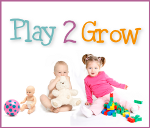A couple of years ago, I worked with a little boy who had already experienced a great deal of stress. He had been severely abused both physically and emotionally. For the purpose of this assignment, I’d classify that stressor under violence. He had a lot of trouble coping with what had happened to him because he wasn’t able to process it yet. Even then, coping with something like that is a struggle. I found that he used play as a way of sorting through the emotions of what happened. He’d set up scenarios that would make him powerful. He’d be the good guys and his purpose was to get rid of the bad guys, but it was always in a violent way. Other times, he’d tell us that he was the monster or a bad guy. Role playing is common at his age, but his was always extreme and revolved around the same thing. This made it harder for him to make friends because they weren’t interested in his play or they got scared of him. One thing he did that seemed almost therapeutic for him was any kind of art activity. He enjoyed making things with play-dough. He loved to draw and gave lots of details about his pictures. He loved tape and would make all sorts of creations with it. He’d make bracelets, houses, different designs etc. He’d usually be all over the place, but when it came to creating something, he would spend at least a half an hour on each project. One day we made mini beach buckets by putting colored sand into these tiny buckets so they could take them home. He sat very quietly focusing on adding each color of sand just right making a color pattern. He paid close attention when transferring the sand from a cup to the little bucket. I think creativity was his main coping mechanism at that point. He also started to become close with his grandparents who were in the process of adopting him. That helped him to have their support. They also used outside resources. He had a play therapist and a person who helped him with issues he was having in the classroom.
The recent natural disaster in has been a major stressor for Japanese children. Some of the short term signs of trauma include fear, not letting his or her parents out of their sight, nightmares, crying, some children not talking at all etc. To minimize the long term effects, psychologists are there to talk to children and families. In one case, I read they set up a coffee shop for people to just come in and talk to them. It’s an unthreatening environment which makes it easier for people to talk. In Japan, people don’t like to admit that they are suffering from any kind of mental issue. In one article, the children were starting school again and they stressed the importance of stability. Even though some of the children might have lost homes, belongings, or family members, they still have a place at school. For the children seeing their friends again was important. Children are using play to cope with disaster. World Vision has set up child friendly spaces where kids can play and older children can help the younger ones. In one example, high school students were using the space to teach younger kids how to play soccer. Play helps keep their minds off the tragedy or helps them work through their emotions. These spaces also allow parents to have a break from childcare so they can tend to other things like getting assistance and try to find jobs and housing. Many grandparents tell the children stories about difficulties from their own childhood during and after World War II and how they overcame them. Children are resilient. If they are able to get the help they need and find a sense of stability, they can get through almost anything.
Japan: After the earthquake and tsunami, back to school
» Japan quake’s youngest victims cope through play
Tsunami trauma stalks Japanese children
Subscribe to:
Post Comments (Atom)


No comments:
Post a Comment
Thank you for your comments! I read them all and I appreciate each one. I often reply to comments so feel free to check back for a response.